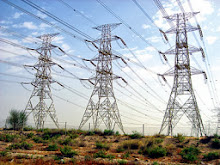Inductor in a DC Circuit
Inductor in a DC Circuit
An Inductor is a passive device that stores energy in its Magnetic Field and returns energy to the circuit whenever required. An Inductor is formed by a cylindrical Core with many Turns of conducting wire. Figure 1 and Figure 2 are the basic structure and the schematic symbol of the Inductor.
 | ||
| Figure 1: Basic Structure of the Inductor |
When an Inductor is connected to a circuit with Direct
Current (DC) source, two processes, which are called “storing” and
“decaying” energy, will happen in specific conditions.
The Inductor is connected to the DC Power Supply, Figure 3.
The sudden increase of current in the Inductor produces an Self Induced
Electromotive Force, vemf, opposing the Current change, Figure 1. This appears as a Voltage across the Inductor, vL = - vemf. This - vemf
will slow down the Current change, and in turn, the slow down of the
Current change, will make vL become smaller. When the Current becomes
stable, the Inductor creates no more opposition and vL becomes zero, the
Storage Phase is over.
 | |
| Figure 3: Inductor is Storing Energy |
An Inductor is equivalent to a Short Circuit to Direct
Current, because once the Storage Phase has finished, the Current, iL,
that flows through it is stable, iL = V / R, no Self Induced e.m.f. is
produced and vL is zero. The Inductor acts like an ordinary connecting
wire, its Resistance is zero. The Current iL through an Inductor cannot
change abruptly.
When the Inductor is disconnected from the Power Supply,
Figure 4, vL reverses polarity and drops instantaneously from zero to a
negative value, but iL maintains the same direction and magnitude. The
energy stored in the Inductor decays through the Resistor RD. vL rises gradually to zero and iL drops gradually to zero.
 | |
| Figure 4: Inductor is Decaying Energy |
In Figures 3 and 4, the Resistance of RS and RD affects the storing rate and the decaying rate of the Inductor respectively.
The quotient of Inductance L and Resistance R is called the
Time Constant τ, which characterizes the rate of energy storage and
energy decay in the Inductor, Figure 5.
 |
| Figure 5: The Voltage VL and Current iL during the Storage Phase and Discharge (Decay) Phase |
The larger the Resistance, the smaller the Time Constant,
the faster the Inductor stores the energy and decays the energy, and
vice versa.
Inductors are found in many electronic circuits. For
example, two Inductors can form a Transformer that is used to convert
between high and low Voltages, and vice versa.
















